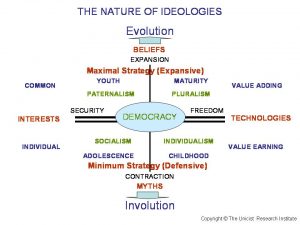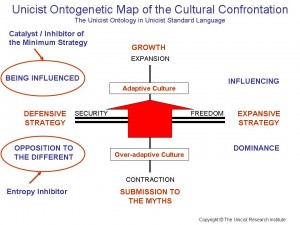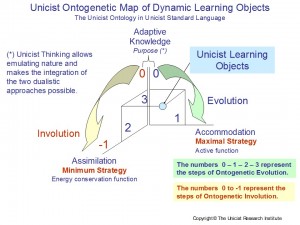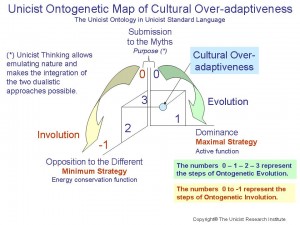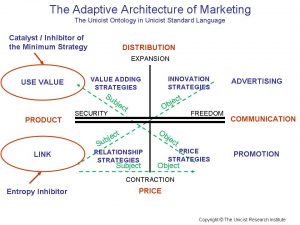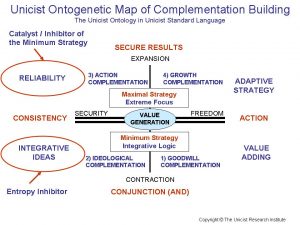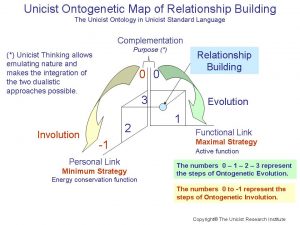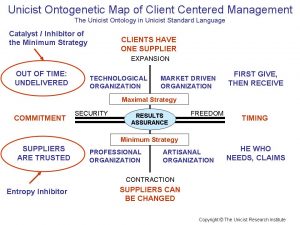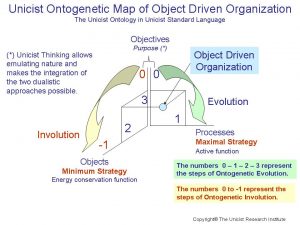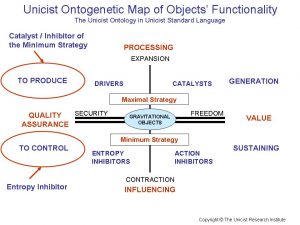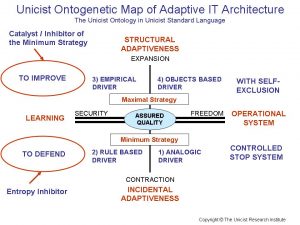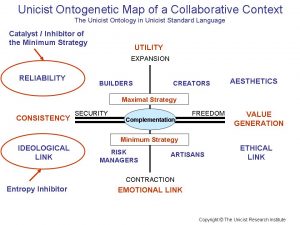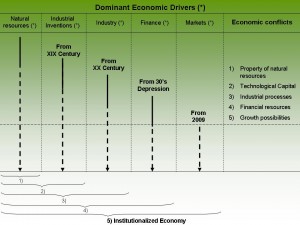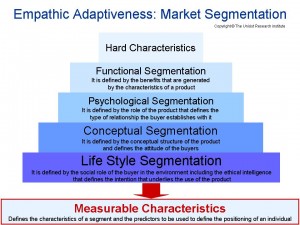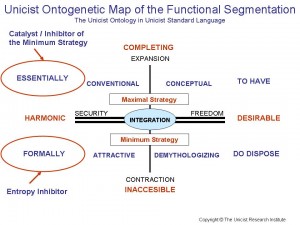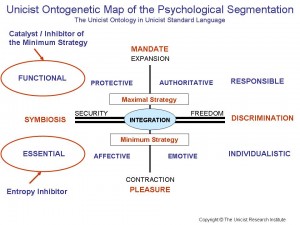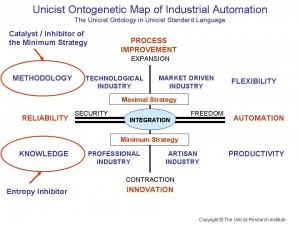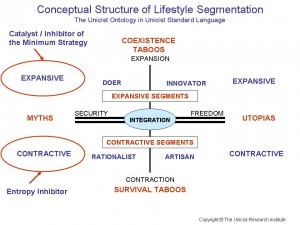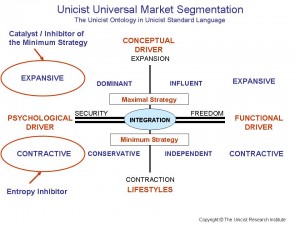This research was developed to provide information that allows understanding the possible evolution of the outcome of the crisis that affects Spain. It is based on the information of the archetypes that were developed 20 years ago and the analysis of the crisis triggered in 2008. It was developed at the Future Research Lab of the Unicist Research Institute and led by Peter Belohavek.
To access the basics on Unicist Future Research please enter:
www.unicist.org/sdp.shtml

The reach of one’s globalization is defined
by the limit of the pronoun “WE”…
The crisis of 2008 was the final trigger for Spain to access an upper level of influence in the European and Global worlds that is being catalyzed by Catalonia and the Basque Country.
It is a structural change that will demand many years until finally being installed in the culture. It implies an upgrade in the educational system in order to go beyond conservatism and foster people to expand the boundaries as a natural way for growth.
Two values are being catalyzed in Spain by Catalonia and the Basque Country:
- The concept of bottom-up legitimacy
- The concept of value adding work
Introduction
The Spanish Kingdom has a traditional “top-down democracy” which has shown to be extremely successful and produced the Spanish Miracle between the sixties and seventies. The synergy produced by the central government was functional to generate growth and wellbeing. It generated a “duty-driven work” value that sufficed in those days.

This allowed a high and steady growth based on a conservative approach.
But the speed of change increased enormously making top-down approach dysfunctional when dealing with economics.
Speed requires “bottom-up democracies” because it requires that individuals assume full responsibility for their actions.
Bottom-up democracies naturally foster “responsibility driven work” where the central directives are only inhibitors to dysfunctional social behaviors. This characteristic has been traditional in both Catalonia and the Basque Country, although having different operational solutions for the same goal.
This responsibility driven approach is not related with the “indignados” movement that occurred recently in Spain. It deals with the notoriously superior exports Catalonia and the Basque Country produce when compared with the Spanish exports.
Archetypes of Spain, Catalonia and the Basque Country
The archetypes of the culture of a country are the drivers that define its final goal which is acted out in the lifestyle of the population. Archetypes cannot be observed, but they can be inferred using double dialectical logic and predictors based on the knowledge of their ontogenetic structure. They can be found in the facts of the history of a country.
 The central fundamentals that drive the archetype of the Spanish Kingdom are:
The central fundamentals that drive the archetype of the Spanish Kingdom are:
1) Ethics
2) Power
3) Wealth
These fundamentals are also implicit in the archetypes of Catalonia and the Basque Country, but have functionally differentiated contents.
While the ethics included in the Spanish archetype is strongly influenced by religion, the ethics included in Catalonia and the Basque Country has a strong influence of ethical functionality.
On the other hand, the trend towards the exertion of power is a dominant aspect of the Spanish archetype while the need for legitimacy in the exertion of power is required in Catalonia and the Basque Country.
Finally, it has to be considered that wealth in the central archetype is dominantly sustained by the value earning ethics while in the other cases ethics is based on the value adding ethics.
It has to be considered that the power of an archetype is based on the work it produces, meaning the capacity to generate added value to the environment. Therefore the archetypes of Catalonia and the Basque Country are more powerful than the archetype of Spain.
Although this has been and is still the trigger of most of the conflicts between the central government and the autonomous countries, it has been at the same time the trigger that allows driving Spain to a higher level of influential power.
Conclusions
A new era is coming. It is the era of increasing the speed and adaptability. This implies moving from a “Top-down legitimacy” which is necessarily conservative to an integrated democratic power that is triggered by a “Bottom-up legitimacy” complemented with a top down approach to avoid entropic actions.
It implies dealing with a complex world where competitiveness needs to be integrated with cooperation. The concepts implicit in the Catalonian and Basque Country’s cultures are a natural catalyst that allows building upon existing approaches without needing to look for foreign solutions.
It will be a conflictive period because there will be people who will try to go back to the Spanish Miracle and others who will accept that something new has to be built. As a transition it is necessarily painful which demands the use of palliatives in order to make the process bearable.
But the good news is that the solution is there.
Annex:
Wealth & Poverty – the Power of Nations – Democracy
1) The Ontology of Wealth and Poverty
The purpose of wealth is to foster evolution to guarantee the opportunities for the next generations. Wealth/Social evolution of a culture depends on the working capacity that is limited by the social and institutional inertia of such culture.
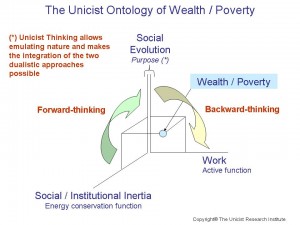 Operationally, wealth depends on the working capacity, the technology, the education and the inertia of a culture. Poverty as such doesn’t exist. Poverty implies the absence of Wealth.
Operationally, wealth depends on the working capacity, the technology, the education and the inertia of a culture. Poverty as such doesn’t exist. Poverty implies the absence of Wealth.
That is why it is commonly seen in underdeveloped countries that there are organizations who promote the “combat of poverty”.
You can combat thieves because they exist, you can combat enemies, but you cannot combat poverty. What you need to increase is wealth. The combat of poverty is just a fallacious myth to justify the distribution of an existing wealth.
The production of wealth must be fostered to reduce poverty. Combating poverty produces more poverty.
Poor countries have no power, because their working capacity is extremely low, that is why they are poor.
Wealth produces evolution
The elites drive the evolution. Producing evolution implies increasing the speed of work of a culture.
Wealth and poverty do no only depend on the action of a culture but also on the limits and possibilities of the environment.
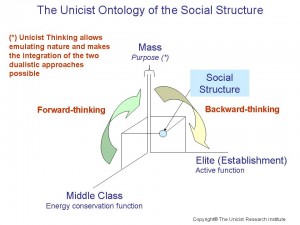
What one is producing today might be worthless tomorrow because the environment changed.
Therefore, wealth implies being focused on the value of work which is always defined by the beneficiary of the task that is being done.
The production of wealth implies ensuring subsistence as a minimum strategy. This subsistence level is what we call poverty.
This level implies following the inertia of a culture and ensuring that the education makes people follow the values of such culture while using the necessary technologies for subsistence.
The maximal strategy is given by the development of work, which implies changing the inertia extending the boundaries of the activity, using innovative technologies to produce more with less while fostering the individual responsibility in education.
When we talk about education we are referring basically to the education of the elites that lead any evolution process.
The Dynamics of Evolution and Involution of Wealth
Understanding the indicators of evolution and involution allows defining if Wealth production is being increased or distributed.
 It can be said that distribution leads to involution and production leads to expansion. If production is not distributed, the economy explodes. If distribution is the center of the economy, the society implodes.
It can be said that distribution leads to involution and production leads to expansion. If production is not distributed, the economy explodes. If distribution is the center of the economy, the society implodes.
The dynamics of Wealth production can be described as follows:
The increase of social wealth produces the evolution of the archetype of a culture.
This necessarily implies materialistic growth and the growth of the social values. This can be observed, among others, in the history of Australia, Brazil, China, Finland, India, Japan, South Korea, Sweden and the USA.
Social wealth grows because the paradigms of work have been changed following the laws of evolution.
Innovative technology and individual education produce the driver that enables the elite to guide through new boundaries to expand the present power of the culture.
Production prevails over distribution. But distribution is considered to ensure the minimum strategy for wealth increase.
Underdeveloped countries usually have a significant segment of their population at, or below, the subsistence level.
Therefore they tend to prioritize distribution and thus the archetype of the country stagnates or involves.
The education for work is the catalyst of the evolution of wealth and thus it is the catalyst of the evolution of the archetype.
The socializing education, to fulfill the social rules of the society, is the entropy inhibitor that ensures that the minimum strategy can be fulfilled.
It is not one or the other; it implies the coexistence of both, which have two structurally different rules.
Individual education for work needs to foster the extension of the technological boundaries while the socializing education needs to sustain social and institutional inertia.
2) How is the Power of Nations developed?
Understanding that the power of a Nation depends on its capacity to work is something very difficult to accept because it is rather new.
And accepting that the archetype of a culture defines the level of work that is the standard in an environment sounds deterministic and for some people racist. Because it implies that every culture obtains what it produces; that underdevelopment is defined by the underdeveloped, development by the developed and emergent by the emerging.
Power = W/t: Power can be measured in speed
Power can be measured in speed. That is why we say we can make a metaphor and measure the level of development in speed.
If developed cultures move at a speed of 100 km/hour, underdeveloped evolve more slowly.
That is why the gap between development and underdevelopment increases from day to day.
But emergent cultures are emergent because they move faster than the developed ones, which means that the gap between emergent cultures and developed cultures decreases from day to day, until the emergent cultures surpass the developed cultures.
The Power of Country Archetypes is defined by Work
P=W/t
Work implies the capacity of displacing facts in nature in order to generate a usable added value for a society.
Therefore it is implicit that the fundamentals of work are consistent with the different levels of archetypes.
Social Value of Influential Work
The purpose of work in elites of influential archetypes is to generate added value in their societies. To do so their active function is driven by the transforming of nature and the energy conservation function is the need to overcome resource scarcity.
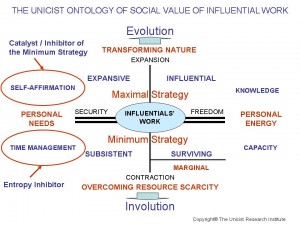 If we see it at an operational level we can define that:
If we see it at an operational level we can define that:
The maximal strategy of the elites is to transform nature driven by the energy focused on knowledge and the personal need that sustains their actions is the self-affirmation of their deeds.
The minimum strategy to overcome resource scarcity is driven by the energy of their capacity to produce and the personal need that sustains their actions is the capacity to manage the time to make things happen.
Work dynamics of the influential type
From a dynamic point of view it can be said that an archetype is involving when the need to overcome resource scarcity prevails over transforming nature.
The catalyst of work at the level of influential archetypes is the need of self-affirmation at work. On the other hand, the entropy inhibitor is the need of time management that ensures following the rhythm of the culture.
Social Value of Expansive Work
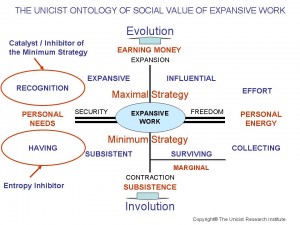
The purpose of work in elites of expansive archetypes is to earn value in their societies.
To do so their active function is driven by earning money and the energy conservation function is the need to survive.
If we see it at an operational level we can define that:
The maximal strategy of the elites is to earn money driven by the energy focused on their efforts to do so and the personal needs for recognition that sustain their actions.
The minimum strategy is to ensure subsistence, which is driven by the energy of their capacity to collect from the environment and the personal need that sustains their action is the need to “have” things.
3) Democracy
Top-Down vs. Bottom-Up Democracies
Democracy can be described as the authoritative leadership of a group or community aimed at achieving consensus and efficiency, and making the necessary trade-offs in a context of evolution conflicts.
 The final goal of democracy is to achieve consensus which implies that there is a greater good that integrates the participants of a community. This greater good defines a vital space that is shared to make consensus meaningful.
The final goal of democracy is to achieve consensus which implies that there is a greater good that integrates the participants of a community. This greater good defines a vital space that is shared to make consensus meaningful.
Sharing a vital space necessarily requires a cooperative attitude and the existence of a nationality or spirit-de-corps that integrate the participants in order to build a context for cooperation. Finally, consensus implies the existence of democratic alternation which implies that the leaders rotate while the institution remains untouched.
Efficiency is defined by the achievement of results based on objective consensus among the members and the building of trade-offs that allow achieving results that go beyond the boundaries of the establishment.
The building of trade-offs imply that a subjective consensus needs to be achieved where the necessary entropy inhibiting trade-offs are implemented paying the price to sustain the evolution conflicts that give meaning to the democratic actions. Evolution conflicts are complementation conflicts that allow empowering and expanding the vital space.
The ethic of democracy – extreme democracy
Consensus is the purpose of democracy. Consensus can be achieved in many ways. Considering extreme-democracy, where consensus is achieved “spuriously”, the Stockholm syndrome can be defined as a type of democracy. It is what we call the anti-democracy. It achieves the same purpose, consensus, but based on the destruction of the free-will of participants.
Four types of democracy can be conceptually defined:
Top-Down Democratic Segments
Individualistic democracy – interest-based submissive model
The goal is to foster individual evolution based on a materialistic submissive behavior of the members of the community.
Belonging group-based democracy
This is grounded on the adherence of people to a group. The goal is to evolve within the rules of a group. Consensus is given by the acceptance of the rules.
Bottom-Up Democratic Segments
Elite-based democracy
It is based on the possibility, open to everyone, to debate the problems of a society. The existence of elites ensures the necessary stability given by an accepted establishment.
Integration-based democracy
The integration-based democracy implies an institutionalization that structures the integration. Institutions filter the incompatibilities and permit a smooth evolution towards efficient consensus. Fundamentalism is incompatible with democracy.
If you want to access more information about this study please contact
n.i.brown@unicist.org
Unicist Press Committee
NOTE: The Unicist Research Institute was the pioneer in complexity science research and became a private global decentralized leading research organization in the field of human adaptive systems.
http://www.unicist.org
